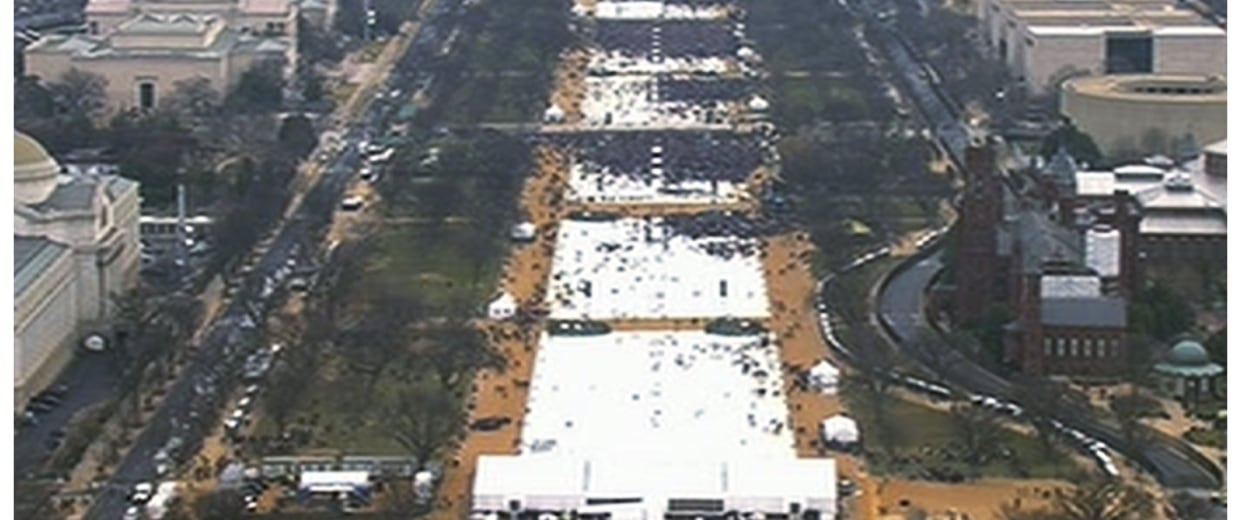
By: Christina Stewart
Just a day after Trump’s inauguration on January 20th, 2017, him and his administration stunned the public with false assertions about how many people attended the ceremony.
In an article from NBC News titled “Some Experts Say Trump Team’s Falsehoods Are Classic ‘Gaslighting’,” by Maggie Fox, she and two psychologists explain the impact of these false assertions. Trump and White House Press Secretary, Sean Spicer, came under fire after claiming that the media misrepresented the crowd size of the inauguration. According to Trump, more people were in attendance than had been reported on and depicted in photos (Fox, 2017). Spicer furthered this comment saying that the inauguration had the largest audience in history (Fox, 2017). Not surprisingly, news agencies were quick to dispute the claims. The general public’s psychological health was undoubtedly affected by these statements as they felt manipulated and dumbed-down.
According to clinical psychologist Bryant Welch and Robert Feldman, the systemic lying from Trump’s camp is a sign of “gaslighting”: a term used to describe when one manipulates and confuses another making them question reality. Confusing people makes them vulnerable — making it easier to gain power over them whether or not they believe what they’re being told (Fox, 2017). The deliberate nature of these false allegations showed arrogance and disrespect for the American audience.
Reading about this event reminded me of the cognitive dissonance theory. When the American public heard the statements disputing the crowd sizes, this resulted in cognitive dissonance: a feeling of uncomfortable tension which comes from having two inconsistent thoughts or beliefs at the same time (Myers, 2012, pp. 97-98). The general public recognized that the crowd size was significantly smaller despite what Trump’s administration claimed. With these two viewpoints clashing, the public was left in a state of disarray. This dissonance not only induced shock, but also mentally affected the public − so much so that it affected their memories.
The public’s reaction was expected and can be explained by findings from a cognitive dissonance study conducted by Dario Rodriguez and Deryn Strange. Authors of the article “False Memories for Dissonance Inducing Events,” Rodriguez and Strange tested just how common it is for people to alter and distort their past to support their self-concepts. They sought to test the hypothesis of whether or not cognitive dissonance causes people to misrepresent their memories and attitudes.
In the experiment, around one hundred undergraduates were told to write an essay where they were either allowed to choose their stance, or were told which stance to take regarding a tuition increase (Rodriguez and Strange, 2014). Before and after the experiment, participants had to complete an online questionnaire asking for their true opinions on several school-related issues. On the questionnaire following the experiment, participants were instructed to think back to the initial online survey, and answer the items as they did at that time (Rodriguez and Strange, 2014). The hope was that attitudes would change after the experiment had ended.
Those who chose their stance exhibited the predicted attitude-shift, and were more likely to misremember their initial attitudes than those whose stances were dictated. Overall, the results provide that cognitive dissonance may cause memory distortion. In terms of the American public, those who recognized the real crowd size were more likely to distort and question this initial belief than those who did not. In other words, those who had agreed with Trump’s statements were less likely to feel any kind of dissonance. Therefore, being told to believe in a false crowd size challenged the public’s memory. People’s memories had to be re-adjusted to fit their self-perceptions after being told the crowd was larger than it was.
It’s fascinating to see how Trump’s behavior is reinforced by psychological data. His willingness to distort the truth is a perfect example of cognitive dissonance, as is his willingness to distort reality.
Works Cited
AP. (2017, January 25). Some Experts Say Trump Team’s Falsehoods Are Classic ‘Gaslighting’ [Digital image]. Retrieved February 15, 2017, from This pair of photos shows a view of the crowd on the National Mall at the inaugurations of President Barack Obama, above, on Jan. 20, 2009, and President Donald Trump, below, on Jan. 20, 2017. The photo above and the screengrab from video below were both shot shortly before noon from the top of the Washington Monument.
Fox, M. (2017, January 25). Tall tales about Trump’s crowd size are “gaslighting”, some experts say. Retrieved January 29, 2017, from http://www.nbcnews.com/health/mental-health/some-experts-say-trump-team-s-falsehoods-are-classic-gaslighting-n711021.
Myers, D. G. (2012). Exploring Social Psychology (7th ed.). New York: McGraw-Hill.
Rodriguez, D. N., & Strange, D. (2014). False memories for dissonance inducing events Memory, 23(2), 203-212. doi:10.1080/09658211.2014.881501

